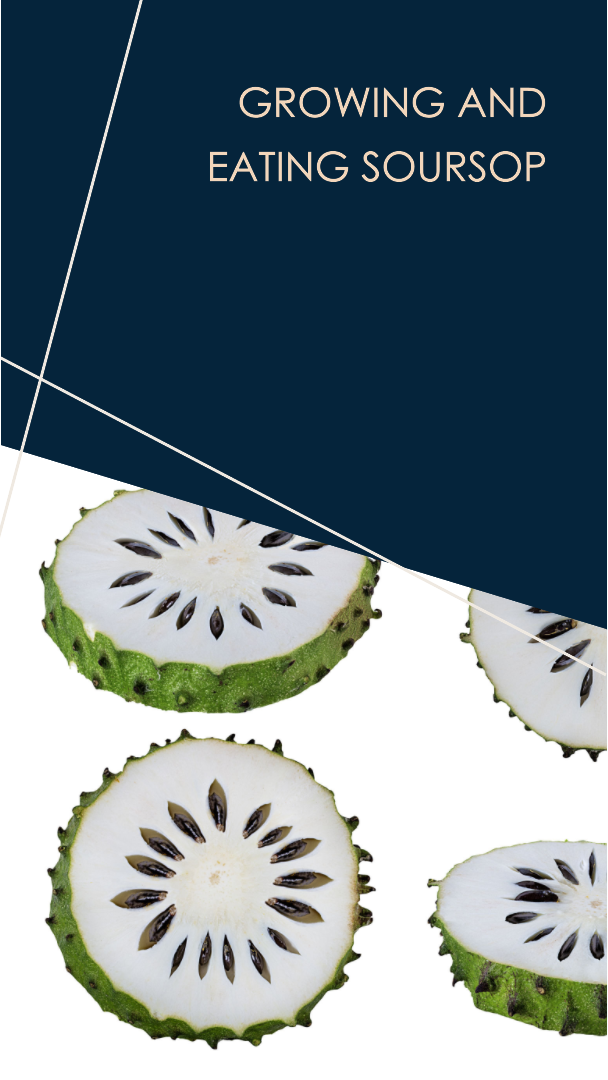Let’s explore the fascinating world of Soursop (Annona muricata), also known as Graviola or Guanabana. With its unique appearance, versatile uses, and numerous health benefits, Soursop is a perfect addition to any home garden. Join us as we uncover the wonders of this tropical fruit, from its description and uses to its nutritional value and culinary applications.
Description and Noteworthy Traits:
Soursop is an evergreen shrub or small tree that reaches a height of 3-10 meters. It boasts greenish-yellow flowers that resemble a partly peeled green mango, adding a touch of visual appeal to your garden. The young branches of Soursop are hairy, while its glossy dark green leaves are oval-shaped. The fruit itself is heart-shaped, with a rough green skin and soft fleshy spines. The fresh meaty flesh is juicy and slightly acidic, producing a rich and creamy thirst-quenching juice.
Versatile Uses and Functions:
Soursop is not only a delicious fruit but also serves several functions in the garden. It makes a perfect addition to home gardens, especially when interplanted between larger fruit trees like mango. It can also function as a shade tree, providing relief to smaller plants or vegetable garden beds during the heat of summer. Additionally, both the leaves and fruit of Soursop are edible, offering a range of culinary possibilities.
Nutritional Value and Health Benefits:
Soursop is not just a tasty treat; it also provides a range of health benefits. The fruit contains vitamins B and C, as well as calcium and phosphorus, making it a nutritious addition to your diet. It is believed to have various medicinal properties, including the ability to remove parasites, reduce inflammation, improve respiratory conditions, boost the immune system, and soothe the stomach. The juice, pulverized seeds, and leaves are commonly used in natural remedies and can be brewed into a powerful tea with impressive effects on the human body.
Growing Details and Care:
To grow Soursop, plant seedlings out in spring or summer, once they have become sun hardened. It thrives in rich, fertile soil and requires full sun to part shade. While Soursop prefers moist soil, it’s important to protect it from waterlogging, as excessive water can be detrimental to its health.
Culinary Applications:
The fragrance and flavor of Soursop are truly delightful, making it a popular choice for fresh consumption. The fruit has been described as a combination of strawberries and apple, with sour citrus flavor notes that contrast beautifully with the underlying creamy texture reminiscent of coconut or banana. Enjoy it fresh or puree it with vanilla ice cream or milk for a delicious drink. Soursop can also be transformed into fruit jelly, juice (with the addition of sugar), nectar, or syrup. For a unique treat, mature but firm fruit can be made into candies with delicate flavor and aroma. Additionally, the fruit can be dried into a sweet fruit leather. As a versatile ingredient, immature Soursops can be cooked as vegetables, used in soups, or roasted.
Tropical Delight
Soursop is a tropical delight that offers not only a delectable flavor but also numerous health benefits. With its eye-catching appearance and versatile uses, it’s a fantastic addition to any organic garden. Embrace the fragrant and flavorful world of Soursop, and explore its culinary potential while reaping its nutritional rewards. Enjoy this tropical treasure in various forms and savor its unique combination of flavors. Happy gardening and bon appétit!
